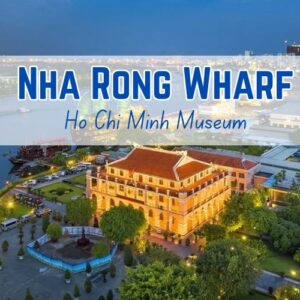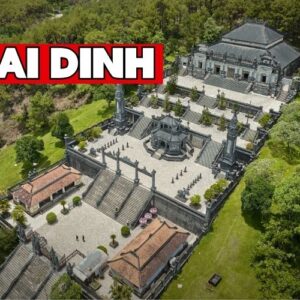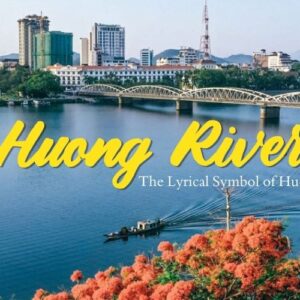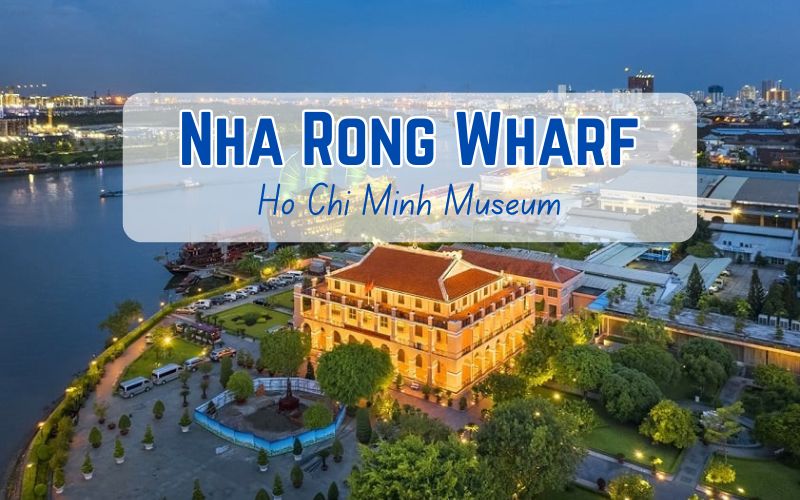
Nha Rong Wharf (also known as Nha Rong Port or Dragon House Wharf) is a historical landmark in Vietnam’s past. At this site, Uncle Ho embarked on his three-decade quest to ensure the nation’s salvation. The transformation of Nha Rong into the Ho Chi Minh Museum in Ho Chi Minh City offers a comprehensive exhibition of artifacts and documents related to Uncle Ho. The site has become a destination for tourists eager to delve deeper into Vietnam’s rich history.
Essential Information for Tourists
- Vietnamese name: Bến Nhà Rồng
- Address: No. 1, Nguyen Tat Thanh Street, Ward 12, District 4, Ho Chi Minh City, Vietnam
- Opening hours: 7:30 – 11:30 and 13:30 – 17:00, Tuesday to Sunday
- Entrance fee: Free
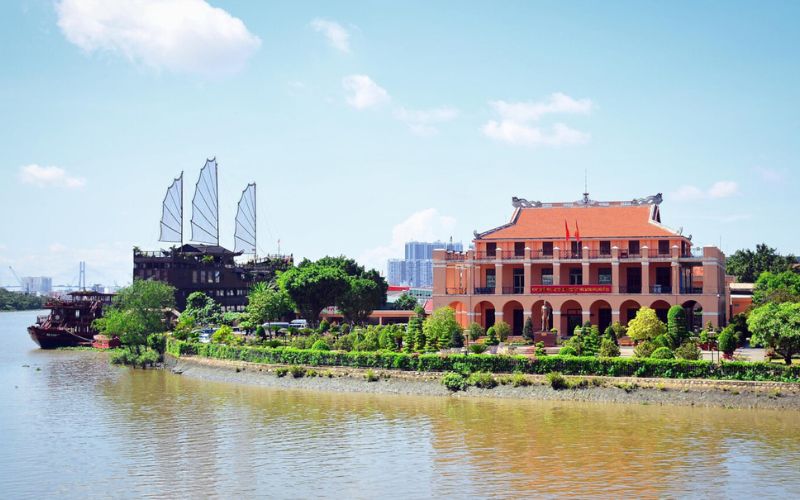
Nha Rong Wharf in Ho Chi Minh City
Nha Rong Wharf now has a designated private parking area, allowing you to easily access the location by motorcycle or car. By opting for personal transportation, you will be able to move around more freely and explore the surrounding attractions more easily.
Public transportation is also available. You will have the option to board buses 02, 03, 19, and 56, which offer direct access to Nha Rong Pier. For group visits, renting a private car offers the advantage of a structured sightseeing itinerary.
History of Nha Rong Wharf and President Ho Chi Minh
Located at the confluence of the Saigon River, Nha Rong Wharf is at the end of Nguyen Tat Thanh Street. Translated as “Dragon House”, “Nha Rong” signifies its historical significance.
At the beginning, Nha Rong served as a bustling trading port for Ho Chi Minh City. This facility, built by the French between 1862 and 1863, facilitated the exchange of goods, weapons, and essential materials during the French occupation of Vietnam.
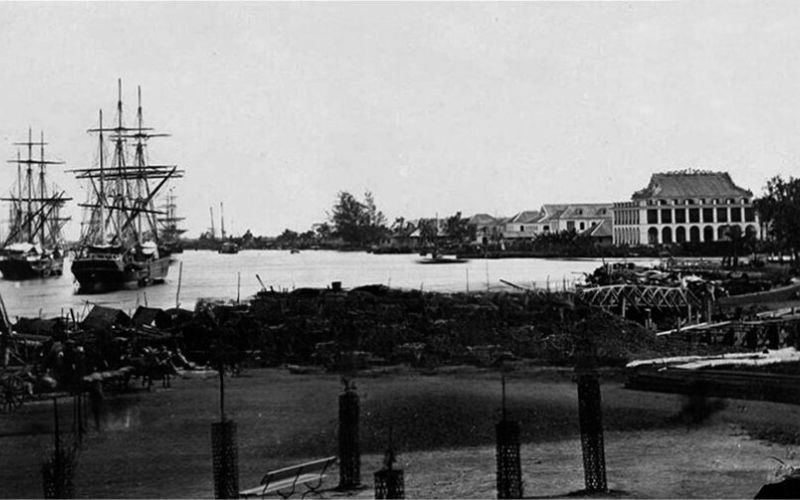
The black and white picture of Nha Rong Pier
On June 5, 1911, in this port, Nguyen Tat Thanh, also known as Van Ba, a young fervent patriot who would later become President Ho Chi Minh, boarded Admiral Latouche Treville at the age of 21. It was the beginning of a long journey dedicated to finding ways to liberate the homeland, while Vietnam was under the influence of France in times of war.
Thirty years later, in 1941, after traveling through various countries around the world, he returned to Vietnam to lead the revolution. Under the guidance of Ho Chi Minh, Vietnam ultimately achieved a high degree of independence.
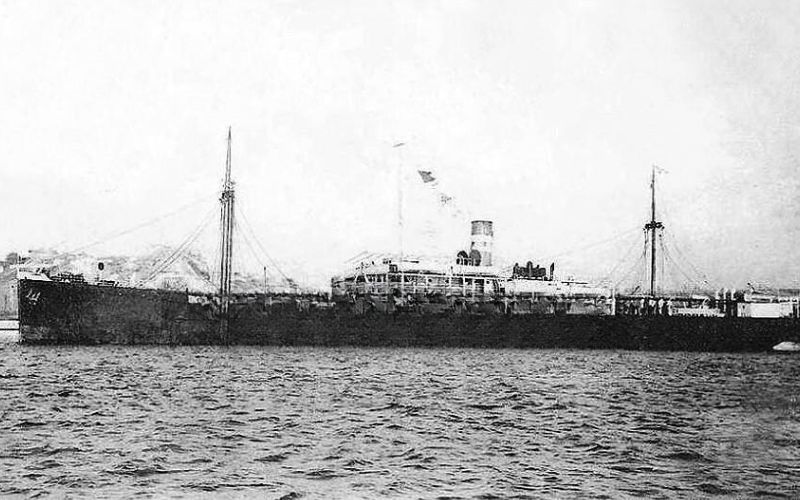
Admiral Latouche Treville ship according to history
In commemoration of President Ho Chi Minh’s significant contributions, the Ho Chi Minh City People’s Committee decided on September 3, 1979, to transform Nha Rong Port into the Ho Chi Minh Museum (Saigon Branch). It has become one of the most famous museums in the city, collecting a large number of photos and items tracing the life and activities of President Ho Chi Minh.
Today, this museum is a touching tribute to this respected Vietnamese leader as a commemorative space. It has attracted many local citizens and international tourists who have a strong interest in the life and communist principles of Ho Chi Minh City.
>>> Is this your first time coming to Vietnam? Let’s take a look at our travel package for first time travelers with Historical and Cultural Highlights of Ho Chi Minh City in 5 Days.
Construction and Architecture of Nha Rong Wharf
As you enter the grounds of the Dragon House, you will have the chance to appreciate its distinctive architectural design. The roof is notably decorated with two ceramic statues representing Vietnamese dragons. These dragons are of great cultural significance in Vietnam, as they often adorn pagodas, temples, and homes. This iconic feature is the origin of the name “Nha Rong”, which translates to “Dragon House”.
In the early days, the museum covered an area of 250 square meters, housing 03 exhibition halls. Today, it has expanded to include 09 exhibition halls, covering more than 148,00 square meters. The museum’s collection includes an impressive assortment of more than 11,300 documents and objects, accompanied by 3,300 specialized books devoted to President Ho Chi Minh.
This rich collection allows visitors to better understand Ho Chi Minh’s life and revolutionary journey. In addition, the museum hosts a variety of attractive activities, including workshops, seminars, exhibitions, and film screenings, which harmoniously integrate tourism and traditional patriotic education.
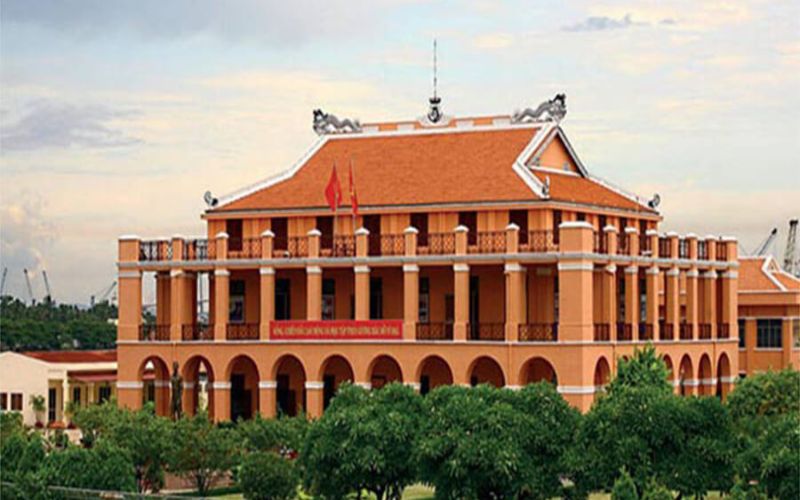
The unique roof with two ceramic dragons
What to See at Nha Rong Wharf?
In the current configuration of the 09 exhibition halls, 06 spaces are dedicated to specific subjects including documents, artifacts, and images associated with the life and revolutionary trajectory of President Ho Chi Minh. The exhibition halls are classified as follows:
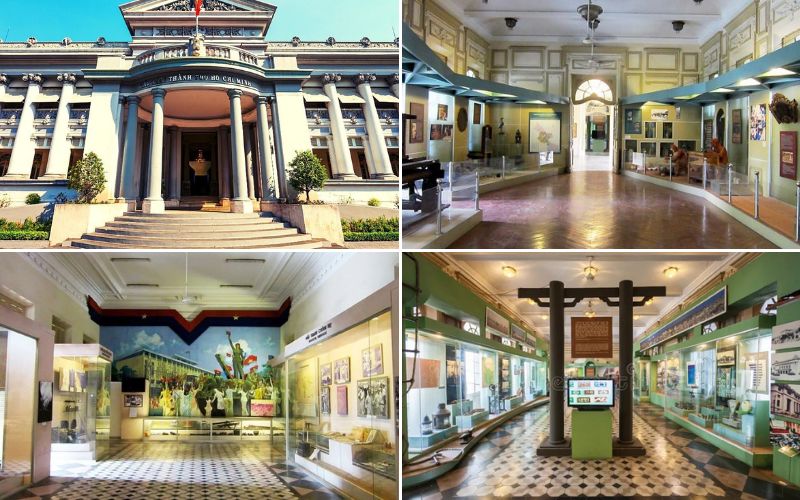
Exhibition halls at Ho Chi Minh Museum
Theme 1: Chronicle of the childhood, youth, and early patriotic and revolutionary efforts of President Ho Chi Minh, as well as his study of Marxist-Leninist theory and the affirmation of Vietnam’s revolutionary path (1890–1921).
Theme 2: Exploring how President Ho Chi Minh innovatively applied VI Lenin’s principles to issues of ethnicity and colonialism. This theme also addresses the creation of the Vietnamese Working Class Political Party (1920–1930).
Theme 3: Chronicle of the decisive role played by President Ho Chi Minh in orchestrating and leading the triumphant August Revolution, which led to the founding of the Socialist Republic of Vietnam. This part also highlights how he led the resistance against the French colonial forces (1930–1954).
Theme 4: Details President Ho Chi Minh’s leadership during the socialist revolution in the Northern region and his efforts against American aggression, which resulted in the liberation of the South and the reunification of the country (1954–1969).
Theme 5: Illustrating the fervor with which the Vietnamese people followed President Ho Chi Minh’s vision to liberate the South, thus promoting national reunification. It also highlights the continuous nation-building efforts for peace, unity, independence, prosperity, and strength (from 1969 to today).
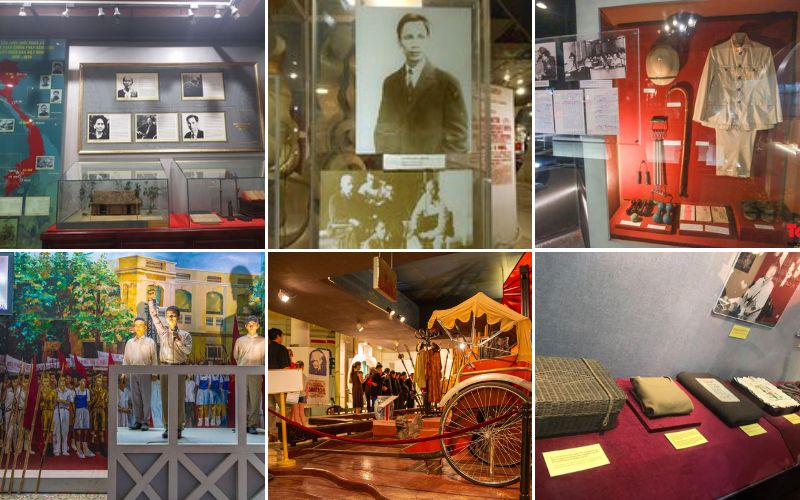
Historical objects and documents at Ho Chi Minh Museum
Theme 6: Exhibition of 208 photos, documents, and objects with the theme “President Ho Chi Minh’s feelings for the South and the feelings of the people of the South towards Uncle Ho”. The room dedicated to the display of images and relics illustrating Uncle Ho’s feelings towards the people of the South and the latter’s mutual affection for him is imbued with deep emotion. The photographs, letters, and gifts exchanged between Uncle Ho and the people of the South beat witness to boundless love. This space often elicits intense reactions from visitors, who are imbued with the snapshots of this poignant bond.
The other 03 specialized rooms meet the needs of current events and contemporary political propaganda. For more information about the temporary exhibition, you will find the official website of the Ho Chi Minh Museum in Ho Chi Minh City.
Notes for Visitors
Nha Rong Wharf has an important place in history and has a large number of priceless objects that can be viewed by the public. It is therefore essential to respect the following guidelines during your visit:
- No touching exhibits: Please avoid touching exhibits to ensure their preservation.
- Silence: Maintain a peaceful atmosphere by refraining from loud conversations or noise during your visit to the museum.
- Photograph and Filming Guidelines: Please follow the limits and precautions listed when taking photos or videos on museum premises.
- Baggage handling: To facilitate your visit, we ask that you leave your backpacks and handbags at the entrance to the museum.
Nha Rong Wharf is a renowned attraction in Ho Chi Minh City, famous for its rich historical significance and enduring architectural charm. It is worth visiting, especially for history lovers. If you want to visit this site during your trip to Ho Chi Minh City, plan your holiday with IDC Travel now!
Read more:

